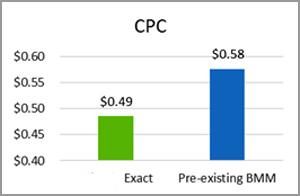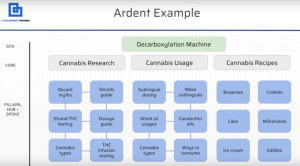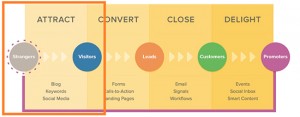— August 2, 2018

tookapic / Pixabay
Many professional services websites aren’t as good as the firms they represent. Successful B2B and professional services firms navigate complex business needs and extended sales cycles. Unfortunately, many organizations struggle to translate their hard-earned expertise into an engaging and productive website.
A website should be a powerful and silent partner in a firm’s business development process, their recruiting program and even their service or solution delivery. In this post, we’ll cut through all the fluff and explore practical website design trends that can help you stand out from the pack. Let’s get started.
A Professional Services Website that Works
In the professional services, expertise is your product and experience is validation. So website visitors who are looking for services like yours want to learn about your firms’ experts and understand the projects they’ve worked on. Without much difficulty, visitors should be able to get a sense of how your firm can help them solve the specific challenges they are grappling with (even if your firm offers hundreds of services across many markets). Consumer-facing businesses deal with a different set of issues, so they build their websites with those in mind. Naturally, an effective B2B website design strategy needs to address the unique needs of the professional services firm and its buyers. But there are still lessons to be learned from B2C websites that can apply to your next redesign. Here are a few ways professional serves websites are different.
- The importance of offline events – While the biggest changes in professional services marketing have come in the digital arena, some of the most impactful techniques used by the fastest growing firms are traditional offline tactics, such as public speaking and writing books. The best performing firms use their digital marketing assets to promote their offline activities.
- Connecting experts to experience – Both business prospects and potential recruits are looking for clues that suggest the firm they are considering is a cultural and organizational fit. Beyond the information on a firm’s bio-pages, these audiences want to understand how your teams work.
- Visible Experts® – The more you can make your firm’s experts visible and accessible, the more valuable they will become — and the more you firm as a whole will benefit by association with them. Your website should facilitate both of these goals.
- Longer sales cycle – The professional services website must be designed for the long sale. That means building in features that address every point of the sales funnel, from first-time, casual visitors to companies that are ready to buy. As a result, it needs to address awareness building, nurturing and conversion over an extended period of time. Of course, speed and responsiveness are crucial, too, lest an interested party lose interest and move on to a competitor.
Compelling content, positioning and a clear differentiation strategy is universally important, but getting it right can take some digging for professional services firms. It pays to commit to a strong foundation before breaking ground on a new website.
Relevant Professional Services Trends Online
As you approach your website redesign, it is useful to understand what other firms are doing today. That way, as you plan the features and goals for your site, you have a full toolbox to choose from. Below are some of the trends we are seeing on recent professional services websites.
- Professional services firms are adding more self-service products – In addition to the continued trend toward more integrated online and offline buying behavior, many professional services buyers are becoming accustomed to purchasing services directly online. While adapting to increased competitive pressures and the evolution of cloud-based systems, some firms have begun to deliver supplemental services and paid access to proprietary data directly through their websites, apps and other connected portals. In fact, Forrester predicts that over 13% of all B2B revenue will be direct through websites by 2021. Whether or not your firm has productized any of its services, these changes in buying behavior — and corresponding expectations for immediate delivery — will have an impact on the professional services industry.
- A new generation of leadership will drive significant change – A younger generation of leaders is entering the C-suite and board rooms. This new generation grew up online and with social media, so they search for expertise, validate referrals and use technology differently than their predecessors. Social media integration and higher expectations for user experience and engagement are the new normal. Gen-Xers and Millennials are the deepest part of today’s pool of professionals, and their motivations and validation methods can differ significantly from the baby boomers trying to hire them.
- Artificial intelligence and machine learning will improve professional services marketing efforts online – With so much buzz and hype around these technologies, it’s hard to tell fact from slick marketing spin. Machine learning and AI will have a dramatic impact on account-based marketing. Artificial-intelligence-infused platforms promises to gauge buyers’ intent and adjust priorities dynamically. The professional services website will serve a crucial role in this process by gathering information on relevant intent as visitors move through content and interact with the site. Ideally, this has the net effect of increasing a return on effort and producing higher-quality leads. At the same time, this process will have to be counterbalanced with adequate privacy protections.
- Natural-language search behavior is mainstream – AI and machine learning are also impacting the way professional services work and find information. Whether queries are typed or spoken, natural-language interaction is becoming more mainstream (and effective). As audiences become comfortable with natural language platforms like Siri and Alexa for common tasks, they will expect to have the same “discussion” with online search engines and websites. Professional services brands will need to adapt to this emerging opportunity.
- The talent shortage is real – Finding and keeping top talent is a top challenge for professional services firms. As the economy has improved, competition for the best recruits has become fiercer. Firms need to respond by upping their online recruiting experience and employer brands.
- Mergers and acquisitions are changing competitive forces and challenging brand identities -Consolidation continues to drive growth and change the competitive dynamics across the globe. Mergers and acquisitions are fueling increased competition from above and below as organizations vie for position. Our own primary industry research identified increased growth momentum at mid-large size firms. In fact, firms’ top concern in the next 3-5 years is increased competition from large competitors and new firms. In this rapidly shifting environment, many websites must contend with increasingly complicated brand identities (and corporate structures).
Strategies for professional services website design
Help your visitors experience your expertise
Just like many professional services engagements in in the real world, a visitor wants to know about you as much as you want to know about them. To help them find answers, think about how to use your site’s design, structure and integrated technology to make your content easy to find and consume. The more visitors can sample your expertise, the more quickly they will come to admire and trust you. Many b2b and professional services websites lean on industry jargon or buzz words in an attempt to sound authoritative and impressive. This is a mistake. Keep your language simple and conversational. The true mark of expertise is a person’s ability to translate complex issues into simple words and concepts. Your website should facilitate this process.
The best B2B websites deliver content that leads to productive conversations (and conversions) between a firms’ experts and its target audiences.
Be bold and plan to take chances
One of the biggest factors holding back professional services websites from standing out from the pack — and applying the lessons learned in other industries — is cost and risk aversion.
It’s easy to see why many professional services firms shy away from taking chances. Their products and services are complicated, and they are priced to cover the high costs of their development and delivery. Most firms believe they can’t afford to take risks if it might mean losing a few sales. But in a fast-moving economy fueled by disruption, you really can’t afford not to take some risks. If you don’t want to be left behind, it’s the only path forward. Your website is an ideal place to take some risks because it is relatively easy to monitor the effects of your “experiments” and make adjustments along the way.
The website design process for a groundbreaking website can be time consuming, resource intensive and expensive. Many firms fall back on an approach they use in their own work to get the highest quality with the lowest investment — they seek out “best practices.” The problem with best practices in web design, however, is that most professional services websites end up looking incredibly similar. It becomes a self-defeating game of imitation rather than innovation.
To break this mold, you need to think of a website as a dynamic and flexible tool. It is important to plan beyond launch day, especially if you deploy a design, feature or strategy that has a chance to be extraordinary.
To mitigate undue risk, adventurous teams define success, but also plan for… not–quite-success. What if the content you worked so hard on doesn’t show the engagement gains your team was planning on? Plans B, C and D should already be in the wings. Of course, that means you need to launch with a way to measure success when the website goes live. Sure, you can test features and designs with focus groups, but we find this sort of pre-testing can produce misleading results. The only true laboratory is in the wild. So it’s important to have a plan in place to monitor your results and adjust your approach post-launch.
Bold website design decisions also begin with the right team. Successful teams are usually small but carefully selected. Choose an internal team of trusted experts who understand your organization’s market strategies, audience behavior and information systems. It’s important for a firm’s leadership to carefully consider internal teams and external consultants before ceding control to the project team. But once you select a core team, empower them to make decisions. Nothing is less satisfying and effective than a website designed by committee.
Design to drive engagement
A number of B2B website design strategies translate well to the professional services. But they should never lose sight of two critical principles: 1) keep things simple; and 2) drive visitors toward engagement and conversion. Here are some great examples of elements small and large that can make a difference:
- Sticky menus add value as an element of responsive design. Use this technique to keep important navigation elements in sight at all times. Some sites are even pinning secondary navigation or filtering options to the bottom of the screen to provide access to important features when browsing websites on a mobile device. When they appear only in certain situations (such as when a site is viewed on a phone) elements like these can add welcome convenience and improve the user experience.
- Location awareness is becoming pervasive in other industries and it’s time that professional services website caught up. Have you ever noticed that Google magically shares the best local sandwich shops when you’re looking for lunch? There are sophisticated systems at work across the web to identify the location of desktop and mobile users. This has become a cornerstone of many consumer website SEO strategies, but it can be valuable to professional services firms, too. For instance, what if you could present the most geographically relevant expertise, talent and events to a website visitor? The value to firms with multiple offices is clear, but it can deliver more engagement and business to single-locations firms, as well. The technology is not without its caveats, but marketers and business developers are finding great opportunity to increase relevancy and improve brand experiences by making use of this maturing capability.
- Dynamic content for returning visitors. A well-planned offer strategy can nurture returning visitors and increase conversions. But the evolution of marketing automation tools can make these interactions far more relevant and flexible. If you deploy a marketing automation tool like Pardot or Marketo, you can implement sophisticated dynamic content triggers, contextual drip campaigns and powerful engagement tools into your website platform. By giving your website the power to serve more relevant content to your visitors, you can dramatically improve the way people experience and think about your brand. GDPR and the California Consumer Privacy Act require more explicit “permission-to-track” interactions, but this is another opportunity to be transparent about your website’s desire to strike up a relevant conversation (and frankly, something brands should be doing without the threat of regulatory oversight).
- Advanced conversational search features. AI technologies such as Google Assistant, Alexa and Siri are on the brink of changing the way people interact with the web. Audiences are being trained to “speak naturally” to computers and mobile devices in their everyday interactions. It won’t be long before that these tools will be used to search for and work with professional services firms. Contextual searching, natural language processing and adaptive search algorithms will be another powerful technique to provide visitors with relevant content and engagement options. These tools are not ready for prime time today, but they are coming soon. Stay tuned!
- Chat features and supporting business processes. With all of the interest in deepening visitor engagement and interaction, it is amazing to see the relative scarcity of chat options on professional services websites! Chat features are often dismissed as being too “salesy” or demanding too much support from business development teams. But the data speaks for itself when it comes to engagement and results. Visitors who use live chat are 20% more likely to buy. At Hinge, we recently tested live chat and found it profoundly useful — and relatively inexpensive and painless to deliver. We have now made it a permanent part of our web experience. As visitors’ buying behavior evolves, they become more likely to take a first step through chat. To a time-constrained audience, firing up a chat is less commitment than scheduling a call – but more immediate and engaging than filling out a contact form. Applied strategically, an option to chat can open a direct conversation that may have otherwise been missed.

- Video and animations can help you tell a richer story. It’s no secret that video has become a more attractive medium for websites and online promotion as streaming technologies have improved. YouTube is ranked second only to Google in its reach, and visitors flock to the platform for easy-to-consume “how-to” information. And B2B firms are catching on. The main obstacle is video’s high production costs. while accessible hardware and software tools continue to evolve and reduce the learning curve, creating high-quality video content still requires technical and story-telling skills — a challenge that technology is unlikely to solve any time soon. Using animation in video can engage audiences and improve understanding. And with advances in HTML 5 techniques, SVG graphics and compression algorithms, it is easier to build crisp animations that look great on high resolution monitors and mobile devices without affecting download speed. Like any other form of content, video and animation is only as strong as the strategy behind it. Whatever approach you take to video, the strength of its story and clarity of its message will be the true measure of its success.
Amplify and measure real-world marketing and business development efforts
Whether your teams are speaking at an industry event or working a recruiting booth, websites present an opportunity to support traditional, boots-on-the-ground marketing tactics and measure immediate results. Offline techniques are an important component of a successful professional services marketing plan, and high-growth firms know it.
By employing some of the engagement-driving features outlined in this post, a website can present tailored content to event attendees and provide relevant content to deepen and extend audience engagement. Using analytics and marketing automation tools in conjunction with these techniques provides an additional layer of intelligence and can trigger follow up actions that further deepen engagement.
Easy social sharing for educational content
Investing the resources needed to build and sustain a compelling website is no small feat, so make sure it’s easy to share the educational content you produce. Social sharing tools make it easy for your team and your readers to share content with their networks. After all, people are always looking for high quality content to help solve their business problems — your job is to deliver it to them.
A roadmap for professional services website design
1.) Gather relevant intelligence
You may be disappointed with your current website, but chances are it has at least some value. Your first job is to analyze what you’ve got and determine what’s worth keeping. Next, look around at competitors and try to understand what they are doing. How are they positioned? What technologies are they using on their websites? What, if any, content are they offering to their web visitors? Finally, think about what your prospects are looking for. What opportunities can you think of to satisfy their wants and needs? Document all these findings so you can refer to them during the redesign process.
2.) Assemble your team
The right project team can make the difference between success and failure. While marketing leaders usually assume the role of project champion, it is important to include key strategic and operational perspectives (for example, practice leaders or roles that are involved in strategic hiring decisions). If you don’t have an in-house army of website design experts and developers, choosing a consultant will be a critical decision. You will be working with this firm for a few months, so consider both technical skills and a cultural fit. Do you need a firm that will drive you through the process with a firm hand, or one that takes a softer, more collaborative approach?
3.) Roll up your sleeves
Developing a B2B website is complex process with many moving parts. You will need to be scrupulously organized. Prepare detailed schedules and milestones to communicate progress and keep the teams’ efforts and timing on course. Be aware that the most common bottleneck and schedule buster is your site’s content. In fact, you can’t start on the content too early. Identify what will move to the new site unchanged and what will need to be created new. Assign experts and/or writers to tackle each assignment and provide firm but realistic deadlines. And don’t forget to include time to review and approve any new pages.
4.) Prepare for life beyond launch
Stringent testing and a well-planned launch process are just the beginning of your websites’ journey. Plan to update your content over time, monitor your hosting performance, and track key marketing metrics to see if you are achieving the performance you expected. Though you may not have the traffic of an AECOM or Amazon, search engines like Google continue to reward better user experiences, including loading speed and valuable content. If your budget permits, invest in top-tier hosting or a CDN (Content Distribution Network) to give your website a performance edge.
A Closing Thought
Professional services websites and the online systems connected to them will continue to evolve and borrow techniques from consumer-focused industries. However, the road to success is peppered with challenges and potential pitfalls, so it will take commitment and flexibility to lead the pack. Using the lessons in this post — and a deep understanding of your buyers — you have an opportunity not only to take you next B2B website to a new level of performance, but to reinvent the way people see and experience your firm.
Digital & Social Articles on Business 2 Community
(129)










